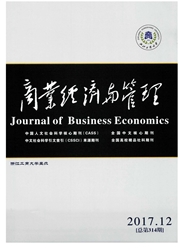

 中文摘要:
中文摘要:
扎根于中国旅游发展的现实,从法理方面回应了张琼和张德淼《旅游吸引物权不可统一立法之辨析》一文(简称"张文")的质疑,对旅游吸引物权的理论问题进行了澄清。文章指出:(1)吸引物权具有典型物权所共有的一般特征,同时又有其独特性,不能归属于债权范围,用债权方式加以解决。(2)旅游吸引属无体物,在可管理的范围内,也可成为物权的客体。(3)旅游吸引物权具有排他性,可以成为其他交易的标的物。(4)旅游吸引物的概念只强调物的旅游吸引价值,并不会对物的产权属性做出改变。"一物一权"原则完全适用于吸引物权的定分。"张文"对旅游吸引物的概念存在误解。文章继而结合现行资产评估方法中的收益法和市场法,根据产品生命周期特点,提出了基于门票收益的旅游吸引资产评估方法。这一方法可以较好地应用于对物的旅游吸引价值(资产)的评估。研究表明,旅游吸引物权并非"张文"所言"表现为虚幻的、不可操作的法律概念",它不仅具有法理上的合理性、社会实践经验的合理性,而且具有满足旅游吸引物交易保护要求的逻辑合理性,有着广阔的实践应用潜力。将吸引物权物权化不仅可赋予所有权人应有的法律主体地位,还将使我国旅游发展更加标准化和规范化,同时使旅游吸引物保护的权利、义务更加明晰化、法治化。
 英文摘要:
英文摘要:
This paper makes a legal analysis of tourist attractions fights (TAR) to clarify some of the associated theoretical aspects, which were questioned by Zhang and Zhang (2013), and it discusses the potential status of TAR in the system of property fights. The present study makes the following points. (1) TAR possess the typical characteristics of property rights. TAR should be regarded as beneficial fights in rem instead of as creditor's fights. (2) Traditional property law is concerned with tangible matters, but TAR belong to res incorporales (intangible assets) in a similar manner to intellectual property rights. TAR are based on fictitious property and should be claimed by property law so as to meet the demands of toufism development. (3) TAR are a form of separate usufructuary rights. TAR are characterized by ownership excludability and can thus become the subject matter of market transactions. (4) Tourist attractions emphasize only the attractive values of a property (Sache) for the tourist. Whether tangible or intangible, a tourist attraction does not change property attributes or other characteristics. Therefore, setting TAR as fights in rem does not violate the fundamental principle of "one thing, one fight." This paper is based on current practices in China's tourism, and it proposes an innovative method for evaluating the market value of tourist attractions. The method incorporates the advantages of two commonly used means of evaluating assets: the income approach and the market approach. In addition, the introduced method involves measuring the market value of tourist attractions by employing the amount of ticket receipts that corresponds to the minimum point of marginal cost as the benchmark. Taking the villages of Hongcun and Xidi in Anhui Province as examples, this paper demonstrates the potential practicality and acceptability of the new method. The above analysis demonstrated that TAR do not correspond to an "unreal, impracticable concept," as assessed
 同期刊论文项目
同期刊论文项目
 同项目期刊论文
同项目期刊论文
 期刊信息
期刊信息
